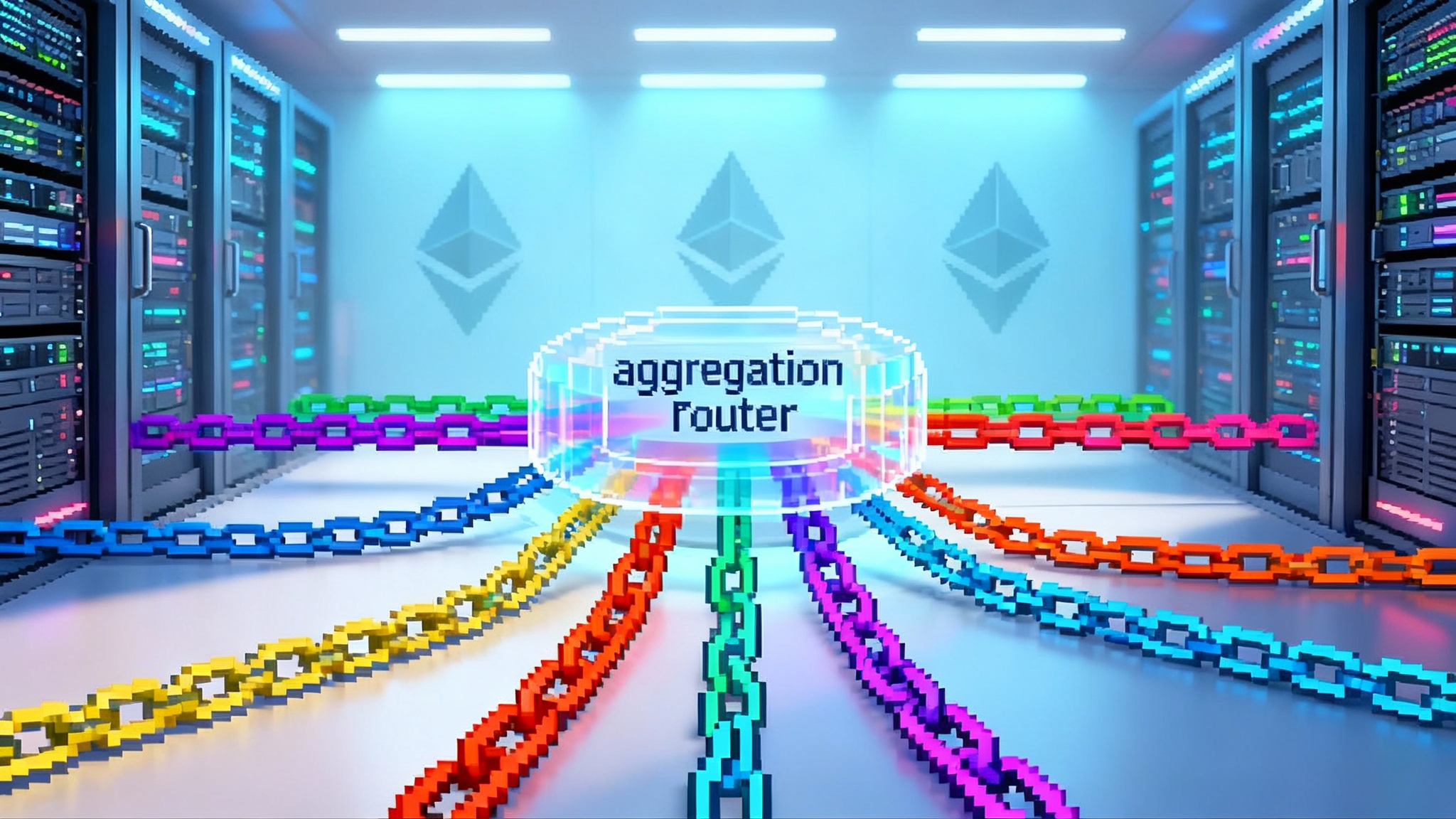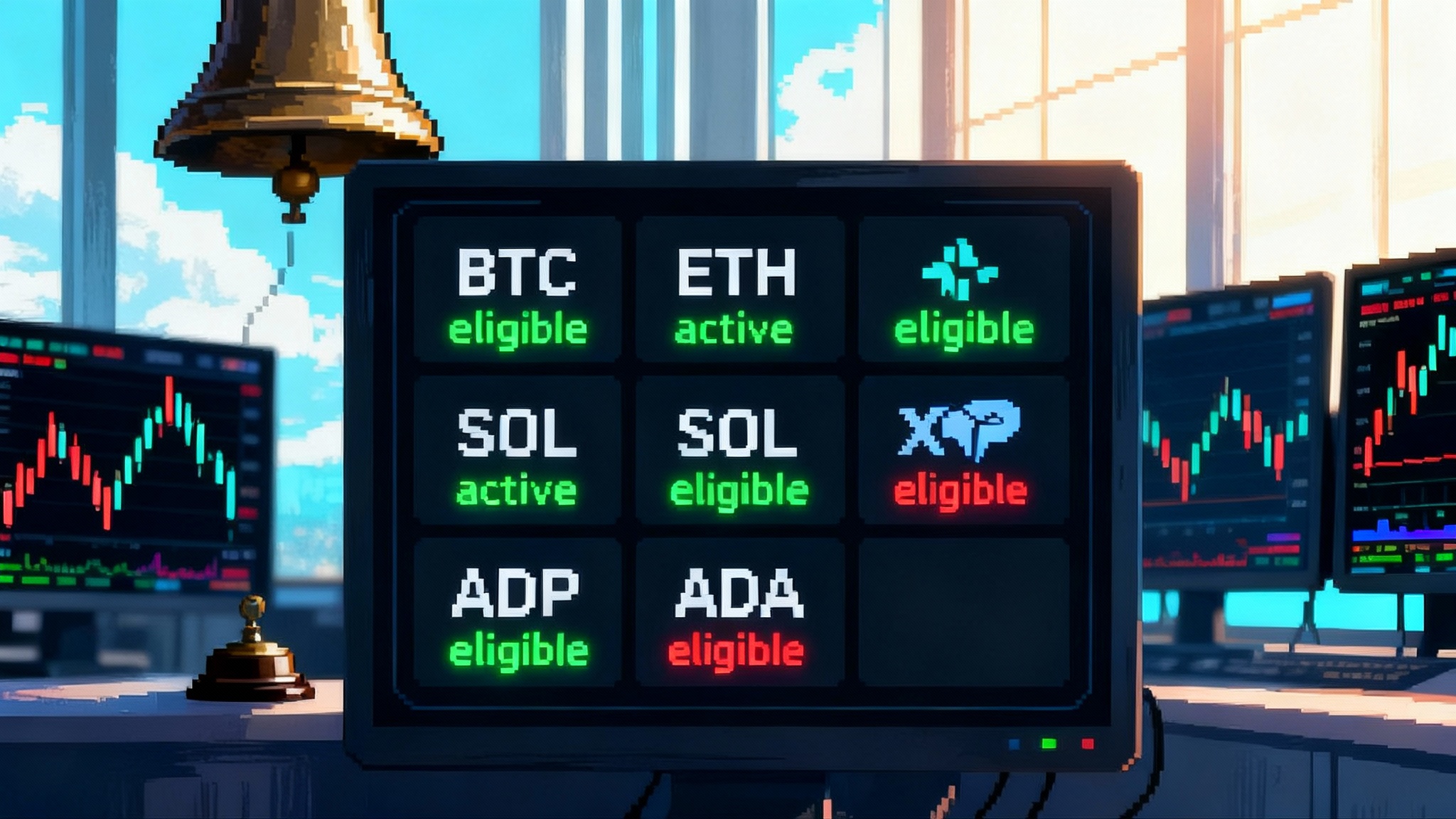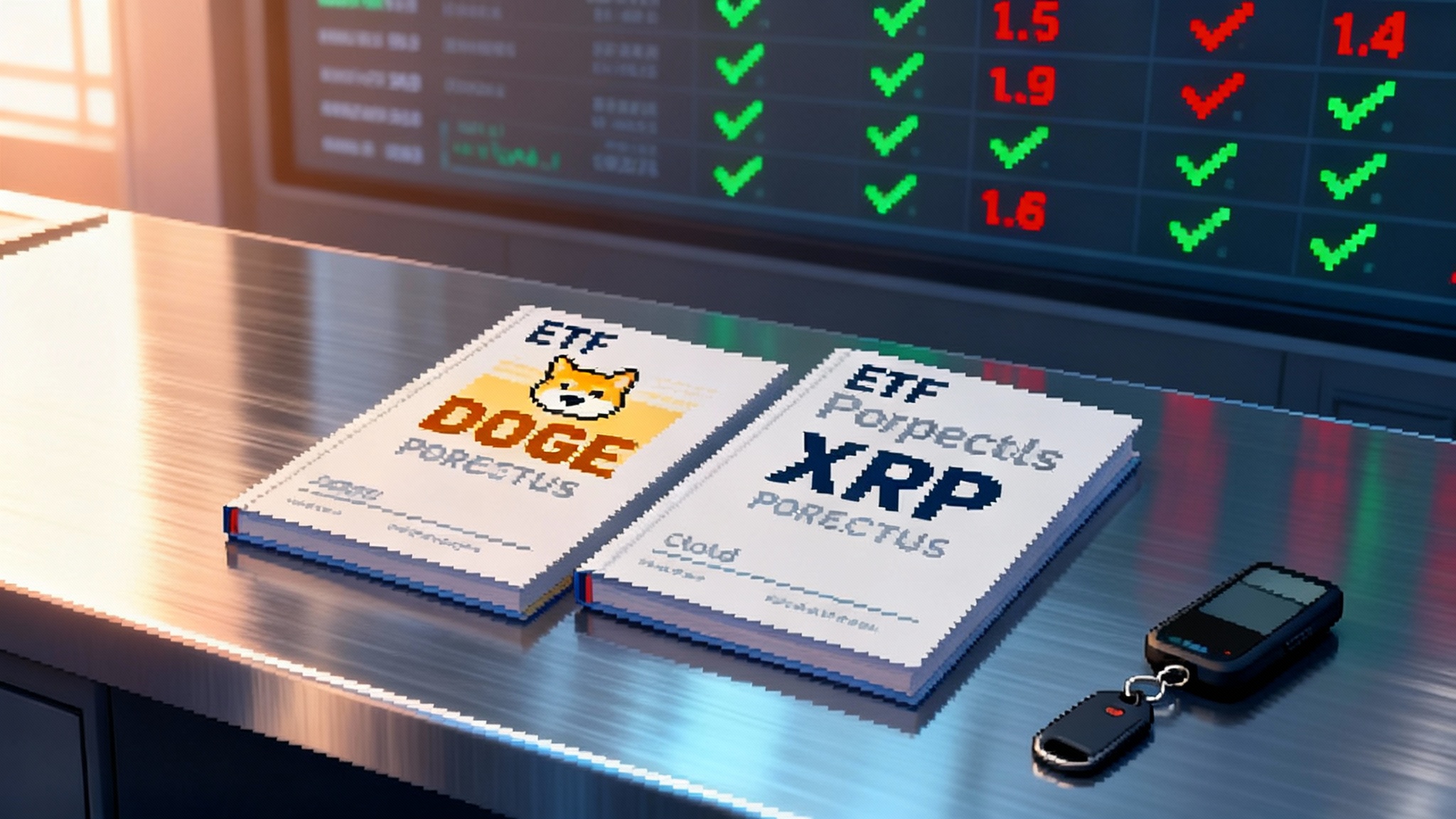Polygon’s AggLayer Is Live and Eating the Multichain
Polygon’s AggLayer is live on mainnet with pessimistic proofs and new incentives tied to POL staking. Here is how aggregation could unify cross‑chain liquidity in 2025 and 2026, cut bridge friction, and simplify the user journey.

The AggLayer moment
Every cycle has its idea that refuses to be small. In 2025, that idea is aggregation. Polygon’s AggLayer moved from concept to something you can build against when pessimistic proofs went live on mainnet in early February 2025. That upgrade matters because it is the security keystone for making many chains feel like one without relying on a trusted bridge. Polygon calls this upgrade the foundation for a multistack world, and it is now in production on Ethereum with AggLayer v0.2, where pessimistic proofs are live on mainnet and already being used to connect heterogeneous chains through a unified bridge and messaging layer (pessimistic proofs live on AggLayer mainnet).
Pair that with a reshuffle in strategy. Polygon has signaled a clear priority shift away from operating a flagship zkEVM network and toward making AggLayer the connective tissue for Polygon PoS, CDK chains, and even non-Polygon stacks. On the growth side, the project introduced new builder incentives and airdrop mechanics tied to POL staking that turn the validator set into a distribution channel for new chains. Put together, these milestones map to a simple promise: lower the mental cost of multichain and concentrate fragmented liquidity into a single user experience. The timing also intersects with new capital flows catalyzed by SEC’s new ETF rules.
What an aggregation layer actually does
An aggregation layer solves a problem that bridges alone cannot. It creates a shared interface for assets, messages, and state proofs across many chains so that, from a user’s perspective, movement across domains feels like a single state transition rather than a hop between unrelated networks. Think of it as a neutral coordination fabric that sits above execution environments and under wallets and apps.
Concretely, AggLayer provides:
- A unified bridge that accounts for deposits, withdrawals, and cross-chain messages across all connected chains.
- A security model that refuses to assume any chain is honest by default. Pessimistic proofs check that no chain can withdraw more than it has provably deposited.
- Room for multiple execution stacks. CDK rollups, the legacy Polygon PoS chain, and stacks outside Polygon’s ecosystem can connect if they satisfy the proof and interface requirements.
The result is not total state fusion. Each chain keeps its own block production, fee market, and finality. What changes is that the cross-chain path becomes a first-class path, with safety and UX that do not degrade when you step off your home chain.
Pessimistic proofs in practice
Traditional rollup validity proofs attest to the correctness of a chain’s execution. Pessimistic proofs do something narrower but critical for cross-chain safety. They make sure no connected chain can lie about deposits sitting on its L1 contract in order to drain the unified bridge. The AggLayer treats every chain as potentially faulty and continuously verifies that aggregate balances reconcile.
That has three practical effects:
-
Blast radius containment. If a connected chain suffers a consensus failure or a malicious upgrade, it cannot yank assets that originated on other chains from the shared bridge. The problem stays local.
-
No extra trust committee. Security does not depend on a new multisig or external validator set. Instead, it uses on-chain proof systems and the underlying L1 as the root of truth for accounting.
-
Chain diversity without weakest-link risk. Chains with different security assumptions can participate without pulling each other down. You do not have to enforce a single execution stack to get safe interop.
In short, pessimistic proofs flip the usual optimism of cross-chain design on its head. The AggLayer assumes chains are liars until they prove otherwise, which is exactly the kind of skepticism unified liquidity needs.
Why aggregation is a liquidity machine
Liquidity lives where trading is easiest and cheapest. Fragmentation erodes depth, widens spreads, and splits order flow. An aggregation layer changes the calculus for both passive and active capital:
- Passive capital can concentrate in fewer pools while still serving order flow that originates on other chains. If the bridge and messaging are native and trust minimized, rebalancing and risk tracking become manageable.
- Active capital gets composable routes across domains. A trade that begins on a CDK gaming rollup can settle on a DeFi-heavy chain without a two-step bridge or a custodial hop. The price path can move through the deepest liquidity across the aggregate rather than the deepest liquidity on a single chain. This dovetails with market-structure shifts like the MetaMask mUSD distribution war.
The experience for users becomes simpler. A wallet can quote a single price and gas for a cross-chain swap. A game can mint on its appchain while tapping a flagship marketplace’s liquidity. A stablecoin payment can stitch together the best fees and finality across domains. Aggregation is what makes multichain feel like single chain.
Incentives that turn stakers into users
Engineering solves the hard safety and UX problems. Distribution solves the cold start. Polygon’s AggLayer Breakout Program addresses the second by tying ecosystem growth to POL staking. Graduating projects have announced plans to allocate 5 to 15 percent of their native token supply to POL stakers in return for securing and validating AggLayer transactions, with early cohorts like Privado ID and Miden flagged as participants (AggLayer Breakout Program with POL airdrops).
This does two things at once. It bootstraps usage for new chains by handing their tokens to an aligned base of AggLayer participants. It also gives stakers a portfolio of upside that tracks aggregate network growth rather than the fortunes of a single chain. In other words, staking POL becomes a bet on the liquidity machine.
The strategic shift away from a stand-alone zkEVM
Operating a general purpose rollup is a different business than building interop infrastructure. Over 2024 and 2025, Polygon reoriented from shipping its own zkEVM as the flagship destination to emphasizing AggLayer as the network of networks while supporting Polygon PoS and CDK appchains. Polygon’s public docs indicate the zkEVM network is scheduled to sunset during 2026, with a long runway for orderly exits and migrations. That frees engineering, support, and incentive budgets to flow toward a single strategic goal: make multichain seamless.
This pivot matches the macro trend. The rollup landscape is crowded, but the interop problem is still under-solved. The winner is unlikely to be any one L2. The winner is the layer that lets any execution environment plug in with credible safety and a unified user experience.
Security model vs traditional bridges
Bridges fail in three familiar ways: custodial key compromise, fault in external validator logic, or economic corruption when the bridge token model invites undercollateralized risk. Even trust-minimized designs that use light clients can be fragile when they must implement many bespoke verifier pathways.
Aggregation layers approach the problem differently:
- Safety over liveness. If a connected chain goes offline or misbehaves, AggLayer can pause that chain’s withdrawals without halting the rest. Cross-chain liveness may degrade temporarily, but the shared bridge should not be drained.
- Unified accounting with explicit limits. Pessimistic proofs keep an auditable ceiling on what a chain can withdraw based on actual deposits held under L1 control. That ceiling does not rise unless the proof says it should.
- Composable verification. Chains that already have strong validity proofs can expose them. Chains that do not can rely on the pessimistic proof path to participate without imposing their assumptions on others.
This is not magic. Users still inherit the execution and censorship properties of the chain where they transact. Economic risk related to long tail assets, oracle design, and liquidity incentives does not disappear. What changes is that the interop layer does not become the weakest link.
Competitive landscape in 2025
-
OP Superchain. Optimism’s vision is a federation of OP Stack chains linked by common standards, shared governance, and a canonical bridge. The Superchain thesis reduces friction among OP chains and makes it easy for apps to spin up purpose-built L2s that feel familiar. Where AggLayer leans into multistack diversity with pessimistic proofs, Superchain leans into same-stack cohesion under common rules. Expect the two approaches to converge in UX but remain distinct in security composition and governance.
-
Cosmos and IBC. IBC is the gold standard for light client bridging in production. It gives you strong safety across sovereign chains that follow the IBC protocol, with a rich toolset for interchain accounts and queries. The tradeoff is that adoption outside Cosmos has been slower, and IBC requires implementation work for new stacks. AggLayer narrows focus to Ethereum-anchored chains and tries to make cross-stack participation easier by handling accounting and guardrails above the execution layer.
-
EigenLayer ecosystems. Restaking has created a marketplace for shared security and AVSs that offer services like data availability, shared sequencing, interop messaging, and cross-domain MEV management. In practice, many L2s will combine an aggregation layer for trust-minimized routing with AVSs for performance and optional shared services. The competition here is not zero-sum. Builders will pick a stack that solves their hardest constraint and compose the rest.
The throughline is clear. The market is moving from single rollups to systems of rollups with native interop. AggLayer’s bet is that a unified bridge with pessimistic proofs is the right core primitive to herd liquidity without over-centralizing execution.
Near-term impacts for the next 6 to 12 months
What changes soon is not only conceptual. It shows up in roadmaps, dashboards, and app designs.
-
For builders
- Shipping cross-chain by default. If you are launching on a CDK chain or Polygon PoS, plan for users and liquidity to arrive from other AggLayer domains on day one. That means thinking about idempotent message handling, chain-agnostic user IDs, and slippage limits that account for cross-domain routes.
- Faster go-to-market with incentives. The Breakout Program and POL staking airdrops are an opt-in distribution channel that can seed communities before your token lists anywhere. Budget time for staking snapshots and make the airdrop utility obvious inside your app.
- Simpler wallet UX. Expect more wallets to make cross-chain swaps and approvals feel like a single flow. Integrate providers that speak AggLayer natively so you do not strand users on the wrong chain after sign in.
- Operational guardrails. Write playbooks for chain-specific halts. If your primary chain pauses withdrawals via the AggLayer, your app should degrade gracefully, not brick. Test fallback routes and disclose status in the interface.
-
For DEXs and market makers
- Unified routing. Routers will quote across chains in one pass. The winners will combine accurate cross-domain price discovery with minimal additional latency. Design for partial fills that may complete on multiple chains.
- Pool strategy. Some DEXs will consolidate deeper pools on fewer chains and rely on the AggLayer for reach. Others will deploy thinner satellite pools on many chains for proximity to users and route to core pools for size. Both models can work if rebalancing and oracle design are treated as first-class problems.
- MEV and auctions. Cross-domain order flow creates new MEV surfaces. Expect growth in shared or cross-domain auction mechanisms. Design to minimize toxic flow between chains, and watch for rebates that align solvers with user price improvement.
-
For users
- Fewer bridges, fewer stuck funds. The default will be to send or swap to the destination chain in a single step, without manual bridge hops.
- Better prices at a glance. Aggregated liquidity should tighten spreads for larger sizes. You will still pay for cross-domain execution, but the path is optimized under the hood.
- Clearer risk. Wallets and UIs can label the chain of execution and the status of cross-chain finality so you know what you are waiting for and why.
Risks and open questions
- Decentralization and governance. AggLayer’s control planes and upgrade paths need to trend toward credible neutrality. Watch timelocks, upgraders, and who can list or delist a chain from the unified bridge.
- Liveness tradeoffs. Pessimistic proofs maximize safety, which can mean more frequent or longer pauses for chains that misbehave. Apps should design for graceful degradation.
- Economic sustainability. Incentives like airdrops are powerful but finite. The long-term value loop must come from fee flows, shared sequencing revenue, or other sustainable sinks that accrue to stakers and builders. Policy changes like Treasury's GENIUS Act on stablecoins will also shape fee dynamics and payment flows.
- Cross-stack complexity. Multistack participation is a strength, but it increases the surface area for edge cases. Tooling must make it hard to shoot yourself in the foot with message ordering, replay protection, or failure handling.
How to position for 2025 to 2026
- Builders. Pick the execution environment that fits your app, but assume your users and counterparties live across the aggregate. Ship chain-agnostic APIs, be conservative with rate limits on cross-domain calls, and lean into native AggLayer features as they mature.
- DEXs and infra teams. Treat cross-domain routing as a product, not a bolt-on. Invest in simulation, price impact forecasting, and rebalancing logic that is aware of bridge queue dynamics and withdrawal ceilings per chain.
- Users and DAOs. If you stake POL, understand how airdrops are allocated and how your stake supports network validation. If you are managing treasuries, consider that passive positions on one AggLayer chain may now serve order flow from many.
The bottom line
Aggregation is the most plausible path to making blockchains feel invisible. Polygon’s AggLayer has shipped the security primitive that lets chains connect without importing each other’s worst risks. It paired that with incentives that recruit stakers as distribution for new networks. Over the next year, the practical effect should show up as fewer bridge hops, deeper effective liquidity, and simpler cross-chain UX. The winners will be the teams that design for a single user journey over many chains.
The multichain was not wrong. It was just waiting for an aggregator that assumes the worst, so users can expect the best.








